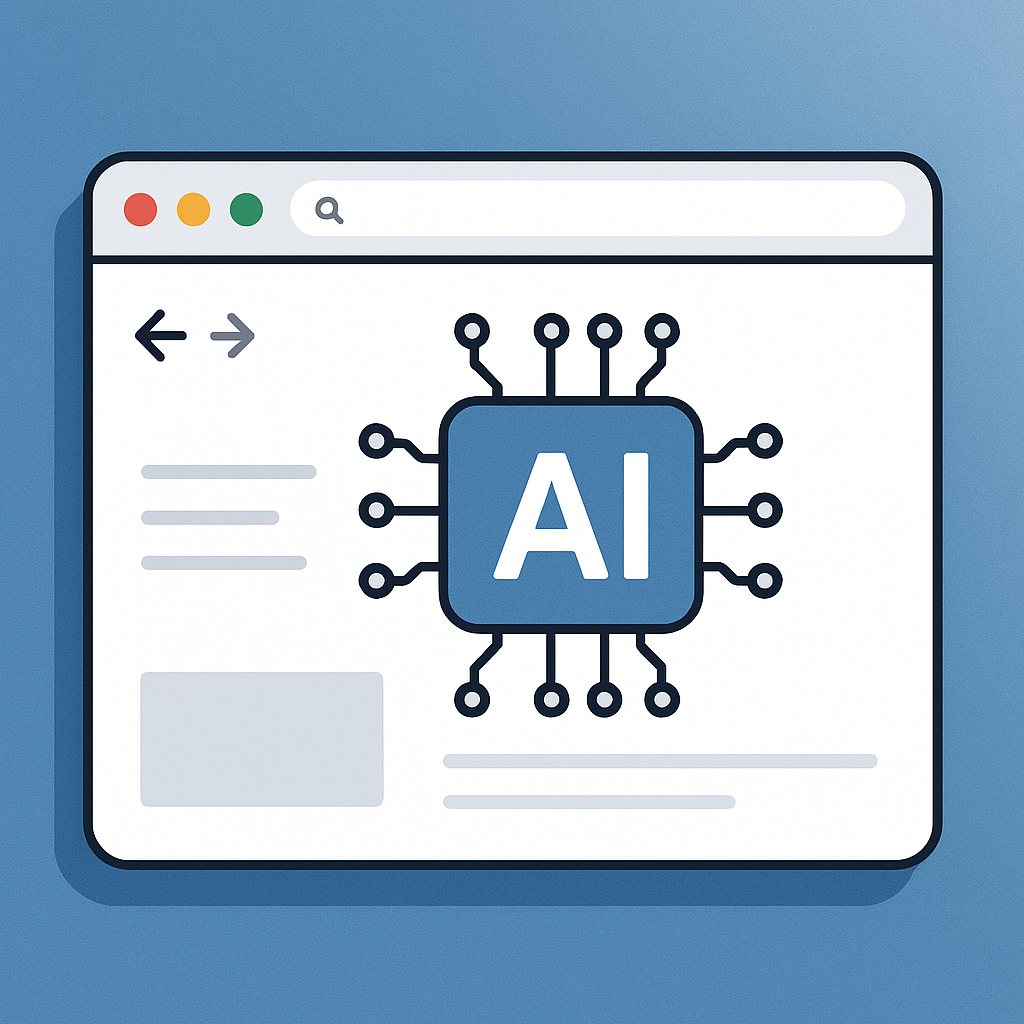Background of America’s AI Action Plan
Overview of AI Action Plan
The AI Action Plan represents a comprehensive initiative aimed at advancing artificial intelligence in the United States. The plan seeks to maintain America’s leadership in the global AI race by setting goals, promoting collaboration, and prioritizing investments.
For instance, one of the central tenets of the plan is fostering innovation through academic and industrial partnerships. The plan aims to align educational institutions with tech companies to create a skilled workforce that can improve AI capabilities. This collaboration is not only about immediate technological advancements but also about nurturing a talent pipeline for future generations.
Importance of National AI Strategy
The significance of a national AI strategy cannot be overstated. A unified approach to AI development is vital for America to boost its economic potential and ensure national security in a tech-driven world.
Here are a few reasons why this strategy is critical:
- Global Competitiveness: A focused AI strategy allows the U.S. to compete effectively against nations investing heavily in AI research and development.
- Ethical Oversight: Establishing guidelines within a national context ensures responsible AI use, which is crucial for public trust.
- Economic Opportunities: Embracing AI can lead to the creation of millions of jobs and stimulate economic growth.
America’s AI Action Plan focuses on technological advancement, emphasizing ethical guidelines and workforce development.
Vision for AI Development in America
Goals and Objectives
America’s AI Action Plan provides a clear vision for developing artificial intelligence in the nation. The overarching goal is to ensure that AI technologies are harnessed for the benefit of society at large.
To achieve this vision, the plan sets out several key objectives:
- Foster Innovation: Encourage research that propels AI advancements, making the U.S. a global hub for creativity and development.
- Talent Development: Train a diverse and skilled workforce equipped to tackle AI challenges and leverage opportunities.
- Safety and Security: Prioritize the development of AI systems that are safe, secure, and reliable, instilling confidence among users.
Key Focus Areas
In pursuit of these goals, certain focus areas are critical for effective implementation:
- Healthcare: Revolutionizing patient care through AI-driven diagnostics and personalized medicine.
- Education: Integrating AI in classrooms to provide customized learning experiences that cater to individual student needs.
- Transportation: Advancing autonomous vehicles to reduce accidents and improve the efficiency of traffic systems.
- Environmental Sustainability: Leveraging AI for better resource management and climate change mitigation strategies.
By concentrating on these areas, America can ensure its AI development meets current needs and is ready for future challenges and opportunities. With a united vision, the potential to transform society is limitless.
Implementation Strategies
Collaborations with Industry Leaders
To bring the vision for AI development to life, strategic collaborations with industry leaders play a vital role. The dynamic nature of AI necessitates a partnership between government entities, educational institutions, and private companies.
For example, one exciting initiative has seen universities teaming up with tech giants to establish innovation labs. These spaces promote knowledge sharing and offer a platform for students and researchers to engage in real-world AI projects.
Key benefits of these collaborations include:
- Access to Resources: Universities gain access to advanced technologies while companies benefit from fresh ideas and talent.
- Real-world Applications: Projects can be tailored to address pressing issues, enhancing both academic research and commercial applications.
- Diversity of Thought: An amalgamation of perspectives fosters creative problem-solving, leading to innovative solutions.
Investment in Research and Development
Equally essential is a robust investment in research and development (R&D). Financial commitment is the backbone that supports groundbreaking discoveries in AI. The U.S. government, alongside private investors, is ramping up funding to drive innovations.
Critical areas of investment include:
- Basic Research: Laying the groundwork for theoretical advancements that can later translate into practical applications.
- Startups and Small Businesses: Funding emerging companies that could become the next leaders in AI technology.
- Infrastructure Development: Enhancing technological foundations, such as data management systems and cloud computing, crucial for AI solutions.
America seeks to strengthen its AI landscape for continued growth and leadership in this vital field.
Regulatory Framework for AI
Addressing Ethical and Legal Implications
The fast-changing world of artificial intelligence requires a strong regulatory framework to handle its ethical and legal issues. With AI systems increasingly integrated into daily life, there are growing concerns about the potential consequences of their deployment.
For instance, consider the ethical dilemma posed by facial recognition technology. While it can enhance security, its misuse could infringe on individual privacy rights. Thus, regulations must ensure that AI is developed and used responsibly.
Key considerations for the regulatory framework include:
- Accountability Mechanisms: Establishing clear guidelines to hold developers and companies accountable for AI system decisions.
- Bias Mitigation: Implementing measures to identify and eliminate biases in AI algorithms to promote fairness and inclusivity.
- Transparency Standards: Requiring companies to disclose how AI systems make decisions and the data used in their training.
Ensuring Data Privacy and Security
Alongside ethical considerations, ensuring data privacy and security is paramount. In today’s data-driven world, AI systems rely on vast amounts of personal information, making robust data protection measures crucial.
Strategies to enhance data privacy and security may include:
- Stringent Data Protection Laws: Enforcing regulations that limit data collection and ensure user consent is obtained.
- Regular Audits: Conducting frequent assessments of AI systems to ensure compliance with data protection standards.
- Cybersecurity Protocols: Implementing advanced security measures to safeguard sensitive data from potential breaches.
Regulatory challenges must be addressed to ensure America can balance innovation and responsibility in AI development, creating a secure and ethical future for the technology.
International Collaboration and Competition
Comparison with Global AI Initiatives
In an era where artificial intelligence is redefining industries, understanding America’s positioning within the global context is vital. Countries around the world are launching ambitious AI initiatives, each with unique focuses and strengths. China is heavily investing in AI research and development to become a global leader, with a focus on surveillance and manufacturing applications.
Europe, on the other hand, emphasizes ethical AI development, focusing on transparency and data regulations to guide responsible innovation.
Key differences in global initiatives include:
- Funding: Varying levels of governmental and private investment driven by the economic landscape.
- Regulatory Approaches: Distinct frameworks for data privacy and security affecting AI deployment.
- Cultural Perspectives: Diverse public perceptions of AI influence how technology is adopted and regulated.
Positioning America in the Global AI Race
With such fierce competition, positioning America effectively in the global AI race is crucial. The U.S. must leverage its strengths—like a robust tech sector and world-class research institutions—to maintain leadership.
Strategies to enhance America’s positioning include:
- Ramping Up Collaborations: Strengthening alliances with international partners to share knowledge and best practices.
- Boosting Domestic Investment: Increasing funding to American startups and research initiatives in AI to nurture homegrown innovation.
- Promoting Education: Investing in AI education and training programs to ensure the workforce is ready for future challenges.
America can strengthen its leadership in AI development and promote global cooperation to advance technology.
Monitoring and Evaluation of Progress
Metrics for Success
As America starts its ambitious AI agenda, effective monitoring and evaluation are essential to achieve the AI Action Plan’s goals. Establishing clear metrics for success allows stakeholders to gauge the effectiveness of initiatives and make data-driven adjustments as needed.
Some essential metrics include:
- Innovation Output: Monitoring the number of patents, research papers, and new AI start-ups can reveal the innovation level.
- Workforce Development: Measuring the number of trained professionals entering the AI field, particularly from diverse backgrounds, helps assess educational effectiveness.
- Economic Impact: Analyzing job creation and revenue generation from AI sectors illustrates the economic benefits derived from strategic investments.
Tracking Implementation Milestones
In addition to metrics, tracking specific implementation milestones is essential for maintaining progress. Setting target dates for key initiatives can help keep projects on track and highlight areas needing additional focus.
Milestones might include:
- Establishing Partnerships: Goals for forming collaborations between academia, industry, and government entities.
- Investment Goals: Targets for funding allocations within specific focus areas, such as healthcare or transportation.
- Regulatory Frameworks: Timelines for developing and enforcing ethical AI regulations and data protection laws.
By monitoring these metrics and milestones, America can ensure its AI initiatives progress effectively and contribute to societal well-being while maintaining global leadership in AI technology.
Challenges and Future Outlook
Potential Barriers to AI Adoption
As America strives toward an ambitious AI future, several challenges may hinder the full-scale adoption of these groundbreaking technologies. Recognizing and addressing these barriers is crucial to harnessing AI’s potential effectively.
Some of the notable barriers include:
- Public Misconceptions: Fear of job losses or ethical concerns about AI’s impact can create resistance among the public.
- Lack of Skilled Workforce: The rapidly evolving nature of AI demands a workforce equipped with relevant skills. However, educational institutions often struggle to keep pace with technological advancements.
- Data and Infrastructure Challenges: Many organizations face difficulties managing vast datasets, which are essential for training effective AI models. Inadequate technical infrastructure can slow adoption.
Forecast for the Future of AI in America
Despite these challenges, the future of AI in America is brimming with potential. The trajectory suggests not only an increase in innovation but also a deepening integration of AI across various sectors.
Key trends to watch include:
- Increased Investment: As awareness of AI’s transformative power grows, we can expect to see higher funding from both public and private sectors.
- Focus on Ethics: The emphasis on ethical AI development will likely result in frameworks that foster trust and transparency, crucial for public acceptance.
- Interdisciplinary Collaboration: Greater collaboration between technology, healthcare, education, and policy sectors will likely lead to innovative applications of AI that directly address societal needs.
America can shape a future where AI improves lives and drives progress by overcoming current barriers and leveraging new trends.
For More Information
Check out my AI-generated podcast here:




